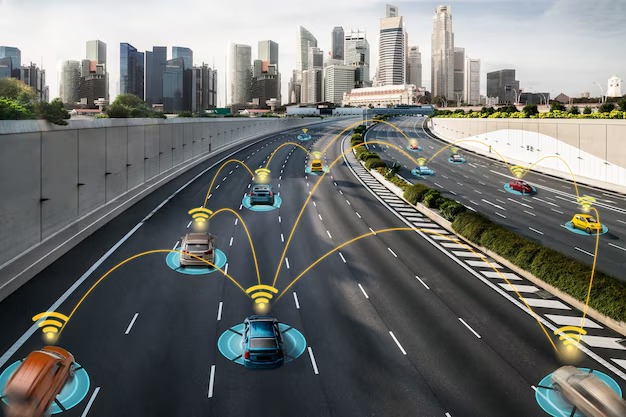The Evolution of Smart Cities: Tech Innovations Driving Change
Published on March 12, 2025

Author: Yiga Richard
As urban populations grow, cities worldwide are turning to technology-driven solutions to enhance efficiency, sustainability, and overall quality of life. Smart cities leverage digital innovations to improve transportation, energy management, public services, and connectivity, making urban living more efficient and sustainable.
In this blog, we’ll explore the evolution of smart cities, the technologies driving this transformation, and the impact on residents and businesses.
What Defines a Smart City?
A smart city is an urban area that uses technology, data analytics, and the Internet of Things (IoT) to optimize city services, improve resource management, and create a more sustainable and livable environment for its residents. These cities rely on real-time data collection and automation to enhance operations and decision-making.
Key Technological Innovations Driving Smart Cities
1. Internet of Things (IoT) and Sensors
IoT devices and sensors are the backbone of smart cities, allowing real-time monitoring of traffic, air quality, water usage, and waste management. These devices help cities optimize resources and improve efficiency.
Example: Smart parking sensors guide drivers to available parking spots, reducing congestion and fuel consumption.
2. Artificial Intelligence (AI) and Big Data Analytics
AI-powered systems analyze vast amounts of urban data to identify trends and improve city planning, security, and public services. Big data helps governments predict and address challenges such as traffic congestion, crime, and environmental risks.
Example: AI-driven predictive maintenance detects infrastructure issues before they become costly problems, saving time and resources.
3. 5G Connectivity and Smart Infrastructure
The rollout of 5G networks is enabling faster and more reliable communication between smart city devices, supporting applications such as autonomous vehicles, real-time surveillance, and remote healthcare services.
Example: 5G-powered smart streetlights automatically adjust brightness based on pedestrian movement, saving energy.
4. Sustainable Energy and Smart Grids
Smart cities focus on sustainability by integrating renewable energy sources and smart grids that efficiently distribute electricity based on demand.
Example: Solar-powered microgrids store and distribute clean energy to reduce dependence on fossil fuels.
5. Intelligent Transportation Systems (ITS)
Smart cities implement real-time traffic management systems, smart public transportation, and autonomous vehicles to reduce congestion and emissions.
Example: Smart traffic lights adapt to real-time conditions, optimizing traffic flow and reducing travel time.
6. Digital Governance and Smart Public Services
Governments in smart cities use digital platforms to improve public services, streamline administrative processes, and enhance citizen engagement.
Example: Mobile apps allow residents to report potholes, request services, or track public transport schedules in real time.
The Benefits of Smart Cities
- Enhanced Quality of Life – Efficient services, reduced pollution, and improved public safety make cities more livable.
- Sustainability and Energy Efficiency – Smart grids and renewable energy reduce the environmental footprint.
- Reduced Traffic Congestion – Intelligent traffic management systems help ease road congestion and improve urban mobility.
- Cost Savings – Automation and data-driven decision-making reduce operational costs for governments and businesses.
- Economic Growth and Innovation – Smart cities attract businesses, drive technological advancements, and create job opportunities.
Challenges and Considerations
While smart cities offer numerous benefits, they also face challenges such as:
- High implementation costs – Developing smart infrastructure requires significant investment.
- Cybersecurity threats – Increased connectivity raises the risk of cyberattacks.
- Data privacy concerns – Managing and protecting citizen data is a priority for smart city initiatives.
- Digital divide – Ensuring equal access to smart city benefits for all residents.
Conclusion
Smart cities represent the future of urban development, where technology enhances efficiency, sustainability, and quality of life. As innovations in IoT, AI, 5G, and renewable energy continue to evolve, cities will become more connected and resilient.
By embracing smart city technologies, governments and businesses can create safer, greener, and more efficient urban spaces, shaping the cities of tomorrow.
Are you ready for the future of smart cities?